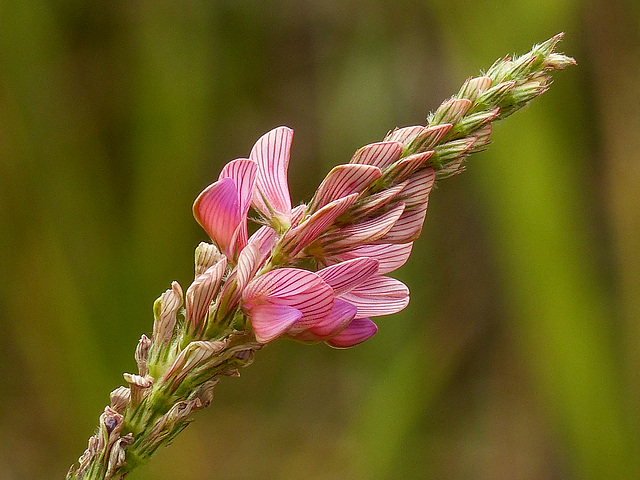Asters plus fly
Purple-flowering Raspberry / Rubus odoratus
Police Car Moth
Yellow Penstemon
Embracing the sun
A beautiful display of Fireweed
Claspleaf twistedstalk berries
Aphids on Fireweed
The joy of vibrant Fireweed
Black Henbane seedpods
Just before it jumped
Chokecherry / Prunus virginiana
Dwarf Dogwood
Fireweed - for a change of colour
One-sided Pyrola / Orthilia secunda
White Campion, male
My favourite Thistle
Against the cabin wall
White Spiraea, aka Birchleaf Spiraea / Spiraea bet…
Come into my parlour, said the spider to the (butt…
Gaillardia against weathered wood
Beetle on Cow Parsnip
Twinflower / Linnaea borealis
Harebell and tiny visitors
The fancy web work of a spider
Butter-&-eggs
Fall colours of Common Tansy
Fall colours
Eye-catching Fireweed
Similar to a Dandelion
Imitation Maple Leaves
From pale to vibrant
Colours of fall
Orange for Halloween
Like rays of sunshine
Wild Licorice seedpods / Glycyrrhiza lepidota
Frosted Rose hips
Wolf Willow berries
Highly invasive Caragana
Moss Phlox
White Baneberry berries
Purple-flowering Raspberry
Creamy peavine / Lathyrus ochroleucus
Purple Avens
Ice crystals on Prairie Crocus
Keywords
Authorizations, license
-
Visible by: Everyone -
All rights reserved
-
293 visits
Sainfoin / Onobrychis viciifolia


Sainfoin has been grown in parts of Europe and Asia for hundreds of years. Various strains have been introduced to North America as a forage crop since about 1900. I came across this plant growing at Carburn Park on 2 September 2014, when I was on a birding walk - I think this is the only location in the city where it grows. Belongs to the Pea family and blooms June-August. It is considered a weed, but, as usual, a very beautiful weed. I love the deep pink stripes on the petals.
"Like many plants with a long period of human use, it is known by many common names. In English, it is commonly called sainfoin from the French for "healthy hay". Sometimes it is called holy hay--a confusion of "saint" for "sain".
Healthy hay is a fitting moniker. It is nutritionally comparable to alfalfa and equally, if not more, palatable to livestock. In addition, research has shown that it inhibits nematode parasitism in ruminants due to its high tannin content. A good report on the use of sainfoin as a feed crop is available on Feedipedia: Onobrychis viciifolia, while images of the species growing as a field crop are available via the Alberta Native Plant Council. As a crop, the plant is considered a good environmental choice: it forms a deep tap root that helps soil stabilization, its roots house nitrogen-fixing bacteria that improve the soil, and its melliferous flowers attract bees and birds. A fine, clear honey has been produced in areas where the plant is cultivated. Lastly, it is more tolerant of drought and cold than other forage crops like alfalfa and clover.
Despite its many benefits, it has largely been replaced by alfalfa and clover in the past century. The main drawback is its poor regrowth after cutting and resultant lower production." From UBC Botany Photo of the Day website.
www.botanicalgarden.ubc.ca/potd/2013/04/onobrychis-viciif...
"Like many plants with a long period of human use, it is known by many common names. In English, it is commonly called sainfoin from the French for "healthy hay". Sometimes it is called holy hay--a confusion of "saint" for "sain".
Healthy hay is a fitting moniker. It is nutritionally comparable to alfalfa and equally, if not more, palatable to livestock. In addition, research has shown that it inhibits nematode parasitism in ruminants due to its high tannin content. A good report on the use of sainfoin as a feed crop is available on Feedipedia: Onobrychis viciifolia, while images of the species growing as a field crop are available via the Alberta Native Plant Council. As a crop, the plant is considered a good environmental choice: it forms a deep tap root that helps soil stabilization, its roots house nitrogen-fixing bacteria that improve the soil, and its melliferous flowers attract bees and birds. A fine, clear honey has been produced in areas where the plant is cultivated. Lastly, it is more tolerant of drought and cold than other forage crops like alfalfa and clover.
Despite its many benefits, it has largely been replaced by alfalfa and clover in the past century. The main drawback is its poor regrowth after cutting and resultant lower production." From UBC Botany Photo of the Day website.
www.botanicalgarden.ubc.ca/potd/2013/04/onobrychis-viciif...
- Keyboard shortcuts:
Jump to top
RSS feed- Latest comments - Subscribe to the comment feeds of this photo
- ipernity © 2007-2024
- Help & Contact
|
Club news
|
About ipernity
|
History |
ipernity Club & Prices |
Guide of good conduct
Donate | Group guidelines | Privacy policy | Terms of use | Statutes | In memoria -
Facebook
Twitter

Sign-in to write a comment.